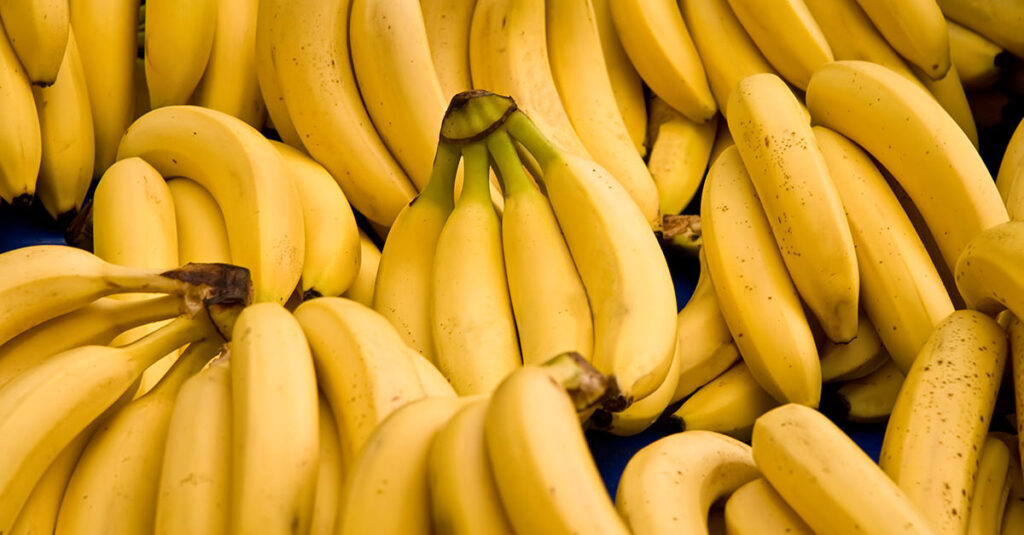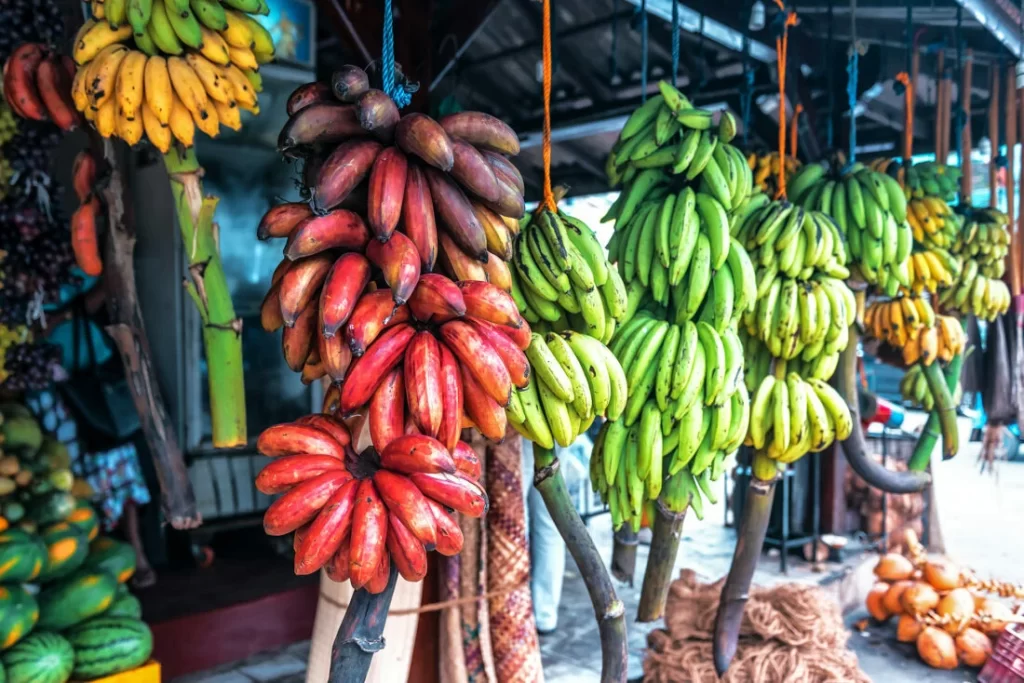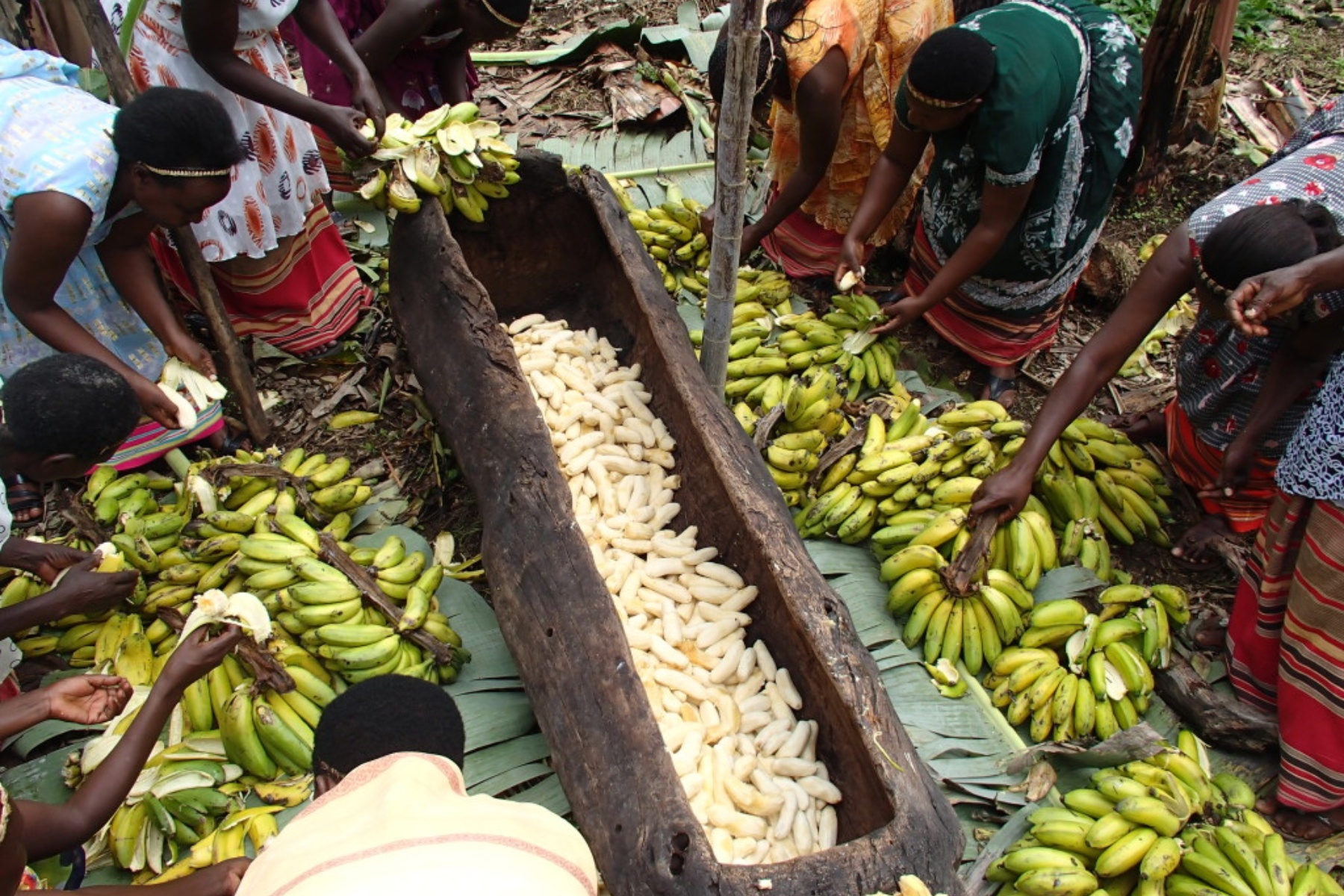Uganda is Africa’s Banana Republic
Uganda is Africa’s Banana Republic, Uganda is referred to as the Banana Republic of Africa due to its exceptional production and consumption of bananas, surpassed only by India. The average Ugandan consumes around 600 pounds of bananas annually, much surpassing the annual per capita consumption of 27 pounds in the United States. This establishes Uganda as a global leader in banana consumption.

In Uganda, especially in the central region, bananas constitute a staple meal. Families include diverse varieties of bananas into their meals for breakfast, lunch, dinner, snacks, and desserts. In contrast to most Western nations, where bananas are generally seen as a snack, Ugandans predominantly consume plantain bananas, referred to locally as Matooke, as an essential component of their diet.
Bananas are quite flexible and are utilized to create juice, beer, wine, and flour. The renowned local drink, Waragi gin, is also produced from bananas. Moreover, every component of the banana plant is employed: the leaves serve as roofing material, while the fibers are fashioned into garments and artisanal products. Explore the reasons Uganda rightfully earns the designation of the Banana Republic of Africa.
Uganda is the Banana Republic of Africa.
Bananas constitute an essential agricultural product in Uganda, significantly impacting the nation’s economy and daily existence. Uganda ranks among the largest banana-producing nations globally, with bananas serving as a fundamental food source for numerous Ugandans. Below are essential points regarding bananas in Uganda:
Bananas are ubiquitous throughout Uganda. In several areas, they are included into nearly every meal and prepared in diverse manners.
Notably, Uganda cultivates a greater quantity of bananas than India. Commonly dubbed the “Banana Republic of Africa,” the majority of bananas cultivated are consumed domestically, with a negligible fraction exported to other nations.
The majority of Ugandans visit their gardens to collect Matooke, a variety of banana. They severed the entire plant along with its fruit. In due course, a new green stem will emerge to supplant the one that was severed.
Uganda yearly produces over nine million tons of bananas, positioning it as the second-largest banana producer globally, following India. For context, Uganda is approximately equivalent in size to Oregon. Notably, this diminutive nation is a significant contributor to banana production, solidifying its designation as a “true Banana Republic.”

The average Ugandan consumes between 750 grams and one kilogram daily.
Uganda is frequently designated as Africa’s Banana Republic, a term not meant to be derogatory. This modest nation cultivates a plethora of bananas and possesses the highest per capita banana consumption rate globally.
The ordinary Ugandan individual consumes between 750 grams and one kilogram of bananas daily. They predominantly consume the Matooke variety, which consists of boiling bananas that are steamed, cooked, and subsequently mashed, frequently accompanied by pork, fish, chicken, or peanut sauce. Furthermore, they relish sweet and roasted bananas prepared over a charcoal fire. It is commonly stated, “Uganda is the authentic Banana Republic.” Failing to sample Uganda’s diverse banana dishes—from fried Matooke to Kabalagala pancakes or roasted Gonja bananas—during your visit would result in a missed opportunity for an authentic Ugandan experience.
Traveling through Uganda, one is captivated by its stunning landscapes and verdant foliage, earning it the title of the Evergreen State of East Africa. Traversing the region, one will observe extensive banana fields characterized by their expansive, supple green foliage that predominates the scenery.
Bananas are essential to the daily lives of numerous Ugandans. This commences in the garden and extends to the kitchen and dining table. Various types of bananas are available, ranging from finger-sized variety to giant eating bananas. The Gonja, ideal for roasting, serve as a delectable snack at any time. The green Matooke is a mainstay in numerous Ugandan households, alongside the sporadic presence of the exotic red variant.
Bananas serve as both a food supply and a base for producing Waragi gin, juice, and wine. The leaves are employed in culinary practices, particularly for steaming Matooke bananas. Leaves are frequently utilized to envelop and encase food while cooking, including the renowned Luwombo chicken dish.
Uganda, often referred to as the Banana Republic of Africa, anticipates your visit. One has not properly explored Uganda without sampling the bananas of the Pearl of Africa. Appreciate Uganda and remember the diverse banana items, encompassing fibers, leaves, and stems. In Uganda, you will encounter several products made from bananas regardless of your location. Notably, bananas did not originate in Uganda; they were introduced from remote regions but have established an ideal and appreciative habitat here.
The several use of bananas in Uganda
Matoke Bananas – Uganda’s Staple Food:
In Uganda, Matoke bananas provide as the primary daily sustenance. Although rice and potatoes are consumed, Matoke is unequivocally the preferred choice among Ugandans.
Each morning, large trucks arrive at the markets, bearing hundreds of stalks of Matoke bananas. Individuals acquire them by the stem, sufficient for a meal, and furthermore procure banana leaves utilized in cooking.
Matoke bananas are generally peeled, steamed, mashed, and accompanied by groundnut sauce, meat or fish, and beans. The groundnut sauce, referred to locally as G-Nut sauce, is composed of ground peanuts.
For Ugandans, a satisfactory day is not fulfilled without a substantial portion of Matoke. Although every family cultivates Matoke bananas, they must be acquired with cash when purchased in the city. While they are not especially inexpensive, their popularity influences the cost.
For safari visitors, sampling a dish of Matoke bananas is vital for an authentic experience in Uganda.
Sweet Dessert Bananas: These banana variants are consumed as a dessert or a convenient snack, akin to a candy bar. The primary varieties consist of Bogoya and Sukali Ndizi (apple bananas), the latter being of finger size.
These bananas are frequently served at hotels during breakfast. They are easily accessible from many merchants, many of whom transport them in baskets atop their heads. Roadside sellers are located at bus stops, near fuel stations, in towns, and at marketplaces, providing delightful surprises.
Numerous individuals remark that these bananas possess the finest flavor they have ever encountered, whether domestically or abroad. We frequently supply bananas to our clients in our safari vehicles, enabling them to savor a flavor of Uganda while traversing between parks.
Your journey to Uganda is incomplete without experiencing the exquisite bananas. A bunch of bananas generally does not endure beyond a day in a Ugandan household.

Gonja – Charred Bananas:
Gonja bananas are marketed by street vendors as a favored snack. They possess greater firmness than standard bananas while retaining sweetness, rendering them ideal for charcoal roasting, during which they acquire a distinctive flavor.
Although rare in this region, Gonja bananas are exceptional when sliced and incorporated into a stir-fry dish. Incorporate pineapple pieces, chicken, and vegetables for a delectable supper.
Gonja bananas serve as a wonderful alternative side dish to rice or Irish potatoes, as they are widely referred to in Uganda. A roasted Gonja banana would complement Ankole beef steak exquisitely or serve as an accompaniment to a whole fish. We have personally tested these flavor combinations and deemed them successful.
Certain luxury hotels attempt with novel fusion cuisine, prominently featuring Gonja bananas in their recipes. We assert that ganja bananas possess significant promise for diverse applications beyond their current limitations.
Kabalagala Banana Pancakes and Additional Baked Products:
Bananas are frequently utilized in baked products. Kabalagala Pancakes are a favored breakfast choice, frequently preferred to bread or porridge. Regrettably, Ugandans have not thoroughly harnessed the culinary potential of bananas in baking.
For example, although one may anticipate encountering banana muffins, what is notable instead are the renowned Queen Cakes. Banana pancakes and banana-flavored ice cream are seldom, and unexpectedly, bananas are rarely included in a banana split.

Kabalagala Pancakes are the preeminent banana-based food, allowing for creative preparation. Certain luxury hotels provide banana pancakes using either sliced or mashed sweet bananas integrated into the dish. A dough-enveloped Gonja Banna could serve as a lovely enhancement. Certain lodges have effectively began offering their own interpretations of banana pancakes.
A potential cause for the limited diversity in pancake options could be the elevated expense associated with utilizing fresh ingredients in contrast to the more economical artificial flavors. Sampling Kabalagala pancakes is essential when visiting Uganda.
Beverages derived from bananas: juice, beer, waragi, and wine.
Ugandans hold a profound appreciation for their beverages, many of which are derived from bananas. Locally produced banana beer is frequently savored, usually consumed through reeds from a traditional vessel. Nonetheless, my preferred beverage is Waragi. The name originates from “War Gin,” and it is a distilled drink readily available for tourists to purchase. Common selections comprise Triple Distilled Waragi labels like Uganda Waragi and Leading (be aware that commercial goods may not consistently incorporate bananas).
In Uganda, a prominent commercial banana beer is absent, however wine and Waragi are widely accessible. Banana juice is generally prepared domestically rather than available at retail stores.
The commercial banana wine sector is emerging, and the quality of these goods has markedly increased. Nonetheless, Ugandans predominantly favor traditional, locally produced banana wine.
Uganda Waragi, available in Europe and North America, is the sole banana beverage that has achieved international acclaim. It is advisable to pair it with Krest Bitter Lemon Soda for an enjoyable experience.
Banana Products Available for Purchase as Souvenirs:
The banana is esteemed for its fruit, leaves, and fibers, which are utilized to produce various souvenirs. These comprise bags, bowls, and baskets crafted with banana fiber. Dried banana leaves are utilized to create distinctive greeting cards, particularly exquisite Christmas cards.
Numerous cultural craft products are constructed from banana leaves and fibers, illustrating several Christmas motifs, including tree ornaments and additional decorations. Moreover, placemats, table mats, bags, and wallets are all constructed using materials derived from the banana plant. In Uganda, a producer produces eco-friendly plates from banana leaves, providing a sustainable substitute for plastic.
The edible bananas in the region were not originally native; they were imported via commerce from Asia, along with other fruits such as mangoes and pineapples. The indigenous form of banana was toxic. Uganda has effectively developed and refined edible bananas for diverse applications.
Uganda – Africa’s Banana Republic Where Bananas Support a Nation:
Uganda, sometimes referred to as the Banana Republic of Africa, has a population of 40 million, exhibiting a particular affinity for bananas, surpassing that of any other country. Bananas are considered a divine gift. You may grow to value this as you savor a delectable Chicken Luwombo accompanied by Matoke bananas. Numerous high-end resorts integrate bananas into diverse recipes, encompassing stir-fries and exquisite deserts.
We comprehend Uganda’s culture and are adept at integrating it into your safari experience, irrespective of your culinary choices. Experience the culinary delights of the Banana Republic of Uganda during your safari in the Pearl of Africa.
Bananas are a fundamental component of Ugandan cuisine, utilized in both daily meals and celebratory events such as Christmas supper. They are essential components of recipes, particularly the renowned Chicken Luwombo, elegantly enveloped in banana leaves. This is essential for anyone visiting Uganda. Upon departing Uganda, you will fully comprehend why it is renowned as the Banana Republic of Africa.
